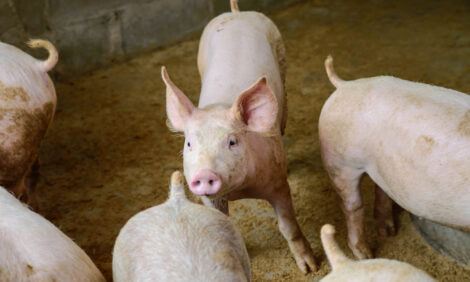



How far can tail posture act as an indicator of tail-biting?
In a new study, the scoring of pigs with hanging tails at feeding was found to be a useful tool for identifying tail damage, which may otherwise be difficult to detect by the caretaker.Authors Torun Wallgren, Anne Larsen and Stefan Gunnarsson (2019). Animals, 210: 26-37. Special Issue Environmental Enrichment of Pigs.
Tail biting is a large welfare problem in modern pig production, causing pain and reduced health and production. The identification of tail biting is important for minimising the risk of the escalation of the behaviour and its consequences. Tail posture (ie, tail hanging or curled) has been suggested to depend on the presence of tail wounds and, therefore, has been suggested as an indicator of tail biting.
The aim of this study was to investigate if tail posture was feasible as a tail damage indicator in a commercial setting. The study was carried out on one batch of 459 un-docked finishing pigs (30–120 kg in weight). Weekly scoring of tail posture was combined with the scoring of tail lesions. Tail posture was observed at feeding to facilitate the usage of the method in commercial settings.
A curly tail was observed in 94 percent of the observations. Pigs with tails scored with “wound” were 4.15 (p < 0.0001) times more likely to have hanging tails, and pigs scored with “inflamed wounds” were 14.24 (p < 0.0001) times more likely to have hanging tails, compared to pigs with nondamaged tails. Tail posture correctly classified tails with “wound” or “inflamed wound” 67.5 percent of the time, with 55.2 percent sensitivity and 79.7 percent specificity, respectively.
By observing the tail position at feeding, we were able to identify pigs with tail wounds in 68 percent of cases simply by scoring pigs with hanging tails. To conclude, the scoring of pigs with hanging tails at feeding was found to be a useful tool for identifying tail damages, which may otherwise be difficult to detect by the caretaker.









